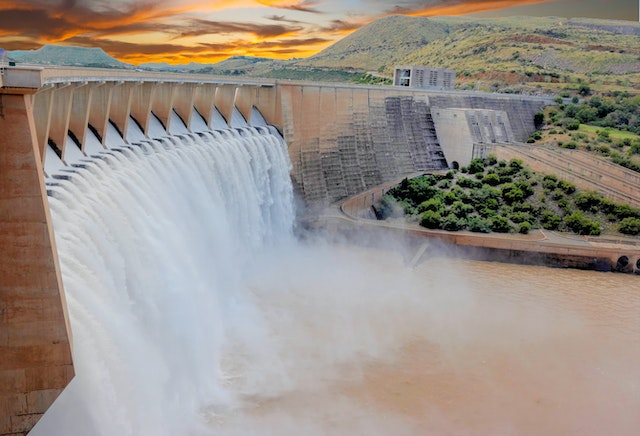
Where was the first artificial dam? The Jawa Dam in Jordan.
Natural dams exist all over the world and can be formed by landslides or trees getting caught at a narrow point in a river. It wouldn’t be difficult for early people to see how it is possible to dam a river. However, until people took to farming, about 12,000 years ago there abouts, that people needed to worry about irrigation and water flow. The earliest dams were probably made by people trying to preserve a water supply or direct water to their crops. It is difficult to find evidence of small dams made like this because they resemble natural rock falls. It was only later when large construction projects became possible that dams would leave enough of a mark for archaeologists to find traces of them.
The world’s first known dam was built in a part of Mesopotamia that is where the kingdom of Jordan is these days. It was not built to make a lake or a reservoir, but to protect the people that lived there from flash floods. A settlement of farmers appears to have popped up in the area between 3400 and 3300 BC. They were trying to live in an area that was hit by violent flash floods every year. The ground is made of basalt, which doesn’t absorb water and the rainfall from the mountains was channeled straight through the area. The people that lived there realized they needed to do something. There were possibly 3 to 5,000 people there with 10,000 sheep and numerous other livestock. They fixed the problem by making the world’s first artificial dam.
The people at Jawa built a gravity dam. A gravity dam is a solid structure built across a river or lake to cut the flow of water. The people at Jawa used large rocks, smaller rocks, and sand, to make the dam. It probably took them less than a year and the dam would have directed the flash flood past their settlement. They built a system of these dams to manage the water. Unfortunately, the dams don’t appear to have lasted that long and the whole settlement was wiped out within a generation.
Another dam was built in Egypt in about 2800 BC. It was just south of Cairo and was 102 m long. It was called the Sadd-el-Kafara Dam. Similar to the dam at Jawa, it was built to divert flood water. The dam didn’t last very long and was washed away by a particularly strong flood.
An impressive system of dams were built in the Indian city of Dholavira at about the same time as the Egyptian dam. Dholavira is located in the north west of India and was founded in approximately 3500 BC. It was built in a rectangle and has a middle town and a lower town surrounding a central citadel. The thing that makes Dholavira amazing is its dams, water channels, and reservoirs. The town is in very dry area and the people in the city were very conscious of water. They built 16 reservoirs in and around their town to capture and hold water. They also built a dam further up the river to slow it down and make it easier to divert the water.
The Romans played a big part in the evolution of the dam. They had the ability to carry out large construction projects and they also had several materials that were not available to earlier dam makers, such as concrete. Dam makers before the Romans had made dams to create water-holding reservoirs, but the Romans took this to a whole new level. They started to make reservoirs that were full year-round and could supply the water needs of a whole town.
The Romans came up with a few things that improved dams. The first was concrete. The idea of concrete had been around for a while, but the Romans were able to turn it into a versatile building material. The Roman architectural revolution happened mainly thanks to concrete. They mixed volcanic ash, seawater, and quicklime, which made a concrete that got harder if it was exposed to more water. It was almost self-healing. Because of this concrete, many Roman buildings are still standing today. The Romans also came up with the idea of the arch dam. This is a dam that is arched out into the oncoming water. It is similar to an arched bridge where the legs of the bridge support the weight of the center of the bridge. With an arched dam, the legs of the arch push against a support and hold up the weight of all the water pressing down on the dam. Many of the Roman innovations we still use today. And this is what I learned today.
Photo by Frans van Heerden: https://www.pexels.com/photo/scenic-photo-of-water-dam-during-daytime-2699258/
Sources
https://en.wikipedia.org/wiki/Dam
https://en.wikipedia.org/wiki/Dholavira
https://en.wikipedia.org/wiki/Jawa,_Jordan
https://education.nationalgeographic.org/resource/dams/
https://www.downtoearth.org.in/indepth/secrets-of-the-water-fort-31932
https://sethna.lassp.cornell.edu/SimScience/cracks/intermediate/grav_hist1.html
http://boulderlibrary.net/water-engineering-in-ancient-civilizations-5-000-years-of-history/romans-and-dam-technology.html
https://en.wikipedia.org/wiki/Arch_dam
